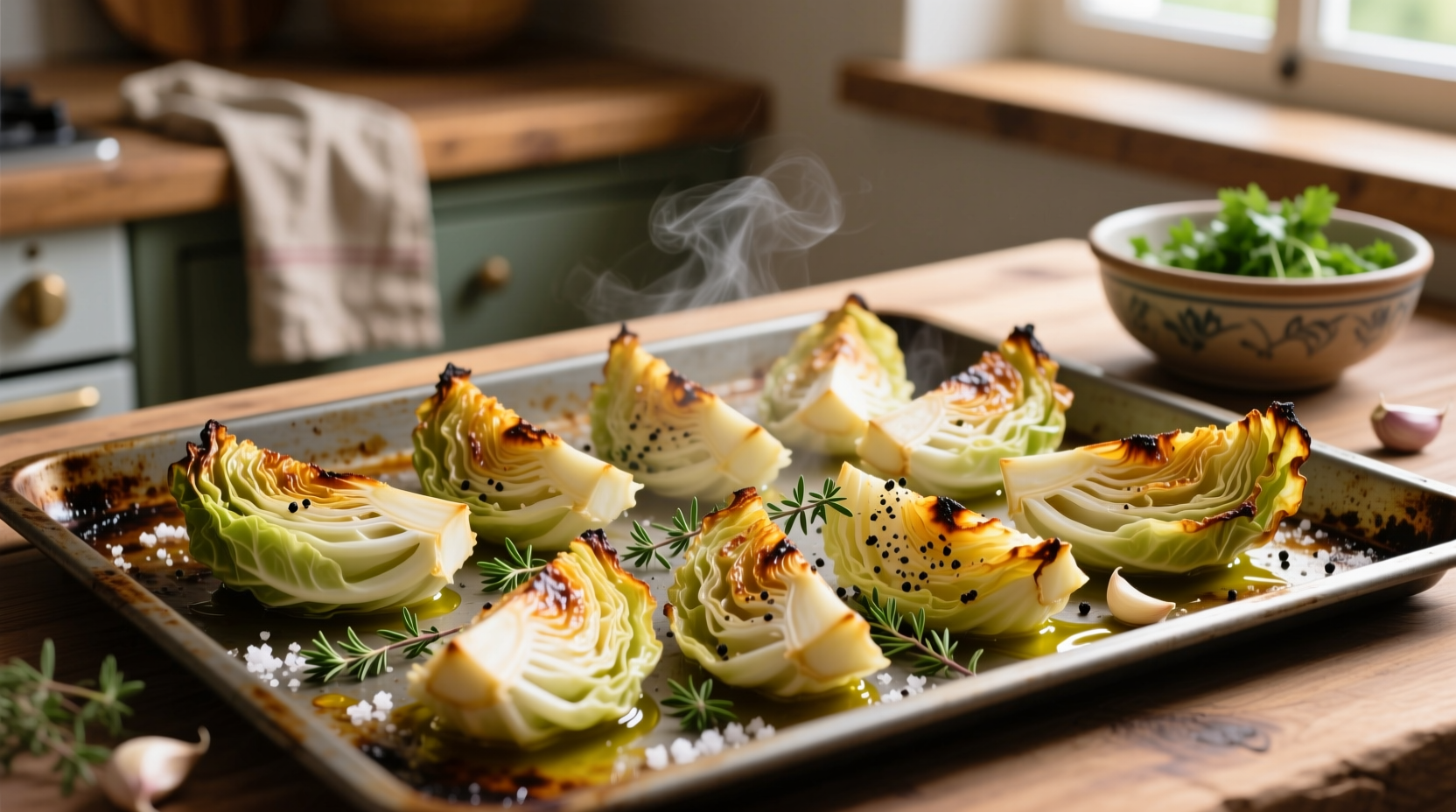Roast cabbage in the oven at 425°F (220°C) for 25-30 minutes. Cut into 1-inch thick wedges, toss with 1 tbsp oil, salt, and pepper. Place cut-side down on a baking sheet. Flip halfway for even browning. It's done when fork-tender with crispy, caramelized edges.
Why Oven-Roasted Cabbage Beats Boiling Every Time
Forget soggy boiled cabbage. Roasting transforms this humble vegetable into a sweet, nutty side dish with crispy edges and tender centers. The dry heat caramelizes natural sugars while preserving nutrients better than boiling. According to USDA food safety guidelines, roasting vegetables like cabbage at 400°F+ ensures safe consumption while enhancing flavor complexity through the Maillard reaction.
Your Step-by-Step Roasting Roadmap
Prep Like a Pro: The Critical First 5 Minutes
Start with a firm 2-pound green cabbage. Remove outer leaves, cut vertically into 1-inch thick wedges keeping the core intact to hold shape. This thickness prevents disintegration during roasting – too thin and you'll get cabbage chips. Toss wedges in a bowl with:
- 1 tablespoon high-smoke point oil (avocado or grapeseed)
- ¾ teaspoon kosher salt (adds crispness)
- ¼ teaspoon black pepper
Pro Tip: Wait to add acidic ingredients like lemon juice until after roasting. Early acidity interferes with caramelization, as confirmed by Cornell University's food science research on vegetable browning reactions.
The Roasting Process: Timing is Everything
| Stage | Time | Visual Cues |
|---|---|---|
| Initial Roast | 15 minutes | Cut-side deeply golden, edges crisping |
| Flip & Rotate | 1 minute | Prevent hot-spot burning |
| Final Roast | 10-15 minutes | Fork-tender with charred edges |
Place wedges cut-side down on a parchment-lined baking sheet. Roast at 425°F (220°C) – this temperature balances caramelization without burning. Flip carefully at the 15-minute mark. Total time varies by oven: convection ovens reduce time by 25%. The cabbage is done when a knife slides easily into the thickest part with slight resistance (tender-crisp texture).

When Roasting Isn't Ideal: Key Limitations
While oven-roasting creates superior texture, understand its boundaries. As noted by the University of Illinois Extension's vegetable guide, roasting works best for:
- Firm cabbage varieties (green, savoy)
- Recipes needing crispy texture
- Side dishes served immediately
Avoid roasting for:
- Stuffed cabbage rolls (boiling softens leaves better)
- Napa cabbage (too delicate, wilts quickly)
- Cold salads (roasted cabbage doesn't chill well)
Flavor Boosters That Actually Work
Add these after roasting to preserve texture:
- Umami Bomb: 1 tsp fish sauce + lemon zest (creates depth without fishiness)
- Crispy Finish: Toss with 2 tbsp toasted breadcrumbs
- Sweet Contrast: Drizzle with apple cider reduction
Avoid common mistakes: overcrowding the pan (steams instead of roasts), skipping oil (prevents browning), or using low oven temps (yields mushy results).
Perfect Pairings for Your Roasted Cabbage
Serve immediately with:
- Proteins: Roasted chicken thighs, pork chops, or smoked tofu
- Sauces: Apple cider vinegar pan sauce or tahini drizzle
- Grains: Farro or wild rice pilaf
Leftovers? Chop finely and add to next-day frittatas – the caramelized edges add incredible flavor.











 浙公网安备
33010002000092号
浙公网安备
33010002000092号 浙B2-20120091-4
浙B2-20120091-4